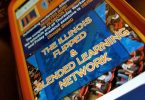
It’s Vital That we Respect Copyright as Teachers (and Teach Students to as Well). Here are Some Tips and Tools to Help.
Students are unable to access YouTube at my school. As such, the only way I can have students view YouTube videos is if I was to copy them and breach copyright. So yet another advantage of creating your own videos is to avoid copyright breaches from copying others’ videos. However, there is still a risk of breaching copyright when using images and video of which you don’t own the copyright. Here are some things you need to know about copyright and how to avoid breaches.
- Copying media from the internet infringes copyright unless the media is under a Creative Commons licence or is in the Public Domain.
- Regardless of the license, you are never permitted to copy or reproduce videos from YouTube. So ripping a video and uploading it onto your school learning management system is a breach of copyright. YouTube videos under the Creative Commons license can be remixed using the YouTube Video Editor for use on YouTube only.
- To use images in your videos, search for images that are under a Creative Commons license or are in the Public Domain. You can filter image searches, in both Google Images and Bing, to identify images that you are permitted to reuse.
Google Images:

- Creative Commons media usually requires attribution. The copyright owner typically specifies how the work is to be attributed. This information can be found with the media. Either attribute the material at the point where it appears in your video or create an attribution page at the end of your video.
- Pixbay (https://pixabay.com) is a great site that contains a large range of videos and images that are available under a Creative Commons license and no attribution is required. Pixabay states “All images and videos on Pixabay are released free of copyrights under Creative Commons CC0. You may download, modify, distribute, and use them royalty free for anything you like, even in commercial applications. Attribution is not required”.
- If you want to use material that is protected by copyright, contact the copyright owner and ask for their permission. I have done this a number of times and have received prompt replies and the copyright owner has always granted me permission. Be sure to state that the material is reproduced with permission.
- Another way to avoid breaching copyright is to draw your own diagrams and drawings in your videos. Use a lightboard or Wacom tablet to draw the image as you talk. It reduces your post production time and the students appreciate your “attempt” at drawing.

So to stay out of copyright trouble, create your own videos and use Creative Commons or Public Domain media or draw your own diagrams and pictures.





[…] 7 Things You Need to Know About Copyright https://flippedlearning.org/tools_apps/7-things-need-know-copyright/ […]
Great info Steve – thanks! Another tip, specific to those in the US, is to familiarize yourself with the “Fair Use” clause for copyrighted materials, which allows for quoting limited parts of content or sharing a copyrighted work for purposes of critique or analysis, and for limited use of content for teaching purposes. More here: http://www.copyright.gov/fair-use/more-info.html (this applies in the US. II don’t know if other countries have similar provisions, but I imagine it is likely).
Hello Steve, Great advice. Further to this, I have had Disney (of all people!) overturn a copyright complaint against one of my YouTube videos (https://youtu.be/DTJP8dQ4vUQ) when I responded that it was fro educational purposes. So even when you break the rules sometimes even a large corporation will see it as fair use.
Thanks so much for the following things: I did not know that you could look for CC for images on google image search, and for Pixabay!
I really appreciate the time and effort you put in posting this article. It gives us additional knowledge to share to our students and co-teachers since sometimes, we become reliant on the resources found online.
If I can suggest one more resource for free images, it would be Pikwizard (https://pikwizard.com)
There’s loads of high quality images that are either CC0 or “free to use”